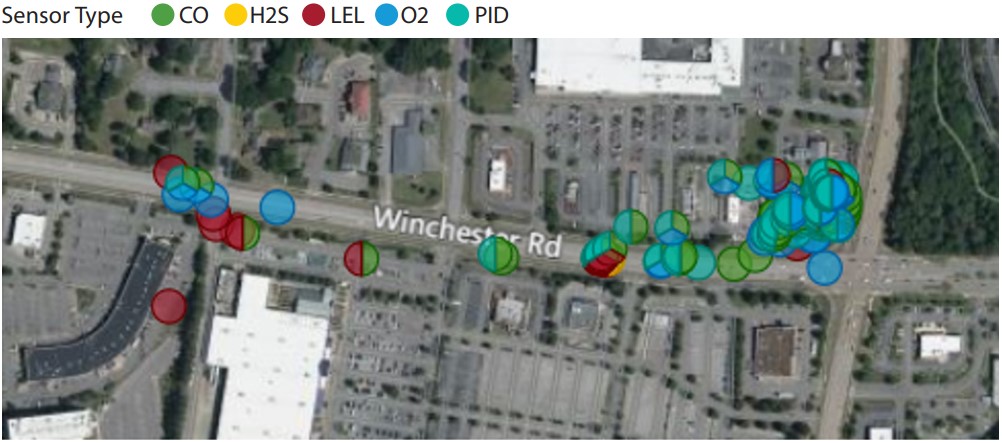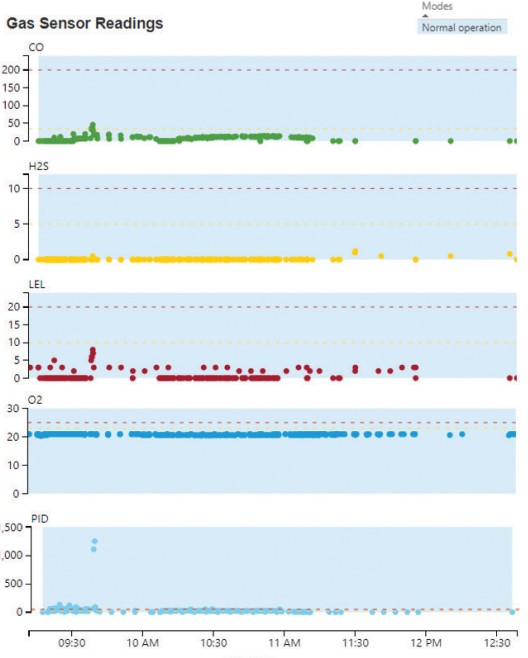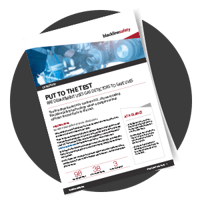While making a routine fuel delivery to a local gas station one morning, the driver of a tanker truck went inside to buy a coffee.
When he returned to the truck, 32 gallons (120 liters) of gasoline had spilled out, and more was flowing rapidly onto the ground. Acting quickly, he shut off the tanks and called 911. The time was 8:15am. Minutes later, firefighters – equipped with the G7 personal gas detectors the department was trialing – were on the scene.
By 8:19am, the fire department lieutenant received the first high gas notification from a G7c personal gas detector he had been testing. Initially, it seemed like a standard alert.
But by 8:21am, the lieutenant had received eight more similar notifications from multiple devices. It was clear the situation was hazardous – and had potential to get a lot worse.
FIRE DEPARTMENT USES GAS DETECTORS TO SAVE LIVES
The fire department of a southern U.S. city was trialing Blackline Safety technology when a dangerous fuel spill put the products to the test.
THE CHALLENGE
Routine fuel delivery turns dangerous
Being able to hear the radio transmissions and see the location of the responders on the map we were able to quickly direct and adjust the response remotely. And with the real-time data – we could follow how the incident was progressing. The safety devices proved their worth to us right then and there.”
Fire Department Lieutenant | Major US City
THE SOLUTION
Firefighters empowered to assess and adjust on the fly
As high gas alarm notifications poured in from the firefighters’ G7s to the lieutenant’s cell phone, he knew it was a high priority incident that needed his attention. Once he logged into the Blackline Live online dashboard, he could see the location of all of the firefighters devices on the satellite map and the gas levels they were experiencing, updating in real-time, even though he was over 5 miles away.
Viewing the satellite imagery on the map, in combination with his knowledge of the area, the lieutenant knew the roadway in question was sloped and in which direction. He quickly realized the fuel would soon be flowing into a busy roadway and down into the sewers.
He instructed firefighters on the ground to investigate possible downhill movement of the spill. Moments later, he could see new high gas alerts appear on the map as firefighters moved multiple blocks down the roadway from the initial spill.
Their G7 devices were detecting high concentrations of gas moving down the slope, just as he had suspected. The firefighters moved quickly to contain the situation, and by 9:57am the incident was resolved.
THE RESULTS
Saving lives in the moment – and over time
Aided by real-time data from Blackline Safety, the Lieutenant was able to leverage his years of experience to diffuse a volatile scenario quickly and safely. Despite being remote, he could assess the situation, direct his people, and receive instant data and readings from their monitors to validate and adjust his strategy.
In total, the G7 devices detected 38 instances of high gas and 98 low level exposures. Not only did this keep firefighters safe on the scene, but the data also quantified the amount of exposure each person had during the entire incident.
This transparency means supervisors have the information they need to assess health risks to their personnel, and ensure they get medical attention when necessary – protecting people in the moment and over time.
At a Glance
- As firefighters arrive on scene, their G7s send high gas alerts to the fire department lieutenant, over five miles away.
- The lieutenant can see real-time location of personnel, plus gas type and exposure levels via Blackline portal.
- G7 data and the lieutenant’s knowledge of the area allows for fast, safe containment of fuel on roadway.


HIGH ALARMS
TOTAL EVENTS
+1
PERSONAL SAFETY WEARABLE + PORTABLE AREA GAS MONITOR
Ready to Get Connected?
Sign up to get our latest blog articles directly to your inbox.



